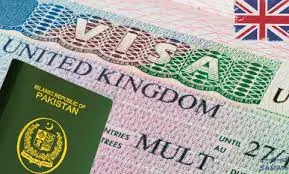For many Filipinos, traveling to Europe is a dream come true. But before enjoying cobblestone streets or snapping photos of the Eiffel Tower, there’s one big step: securing a Schengen visa. In 2024, over 11.7 million people applied for it worldwide. Almost 1.7 million didn’t make the cut, that’s nearly 15 percent. Many rejections happened because documents were missing or financial proof wasn’t convincing enough.
We’ll talk about what the Schengen visa is, why Filipinos need it, and how to get approved without unnecessary stress.
What Exactly Is a Schengen Visa?
Think of the Schengen visa for Filipinos as a single pass that opens the doors to 29 countries in Europe. With it, you can stay up to 90 days within a 180-day window. The best part? You don’t need to apply separately for each country.
France, Italy, Spain, Germany, they’re all covered under this visa. Just remember, the UK and Ireland are not part of the Schengen zone, so those require different applications.
Why It Matters So Much
If you’re traveling for a holiday, meeting family, or even a short business trip, this visa is non-negotiable. Without it, most of Europe is off limits.
The real challenge? Getting approved. Some countries are stricter than others. Malta, for instance, rejects nearly four out of ten applicants. And most of those denials happen for the same reasons: incomplete paperwork, weak proof of finances, or not enough evidence that the traveler will return to the Philippines.
Being aware of these pitfalls makes it easier to prepare properly.
How to Get a Schengen Visa as a Filipino
Let’s walk through the process step by step, but in plain terms.
First, figure out where you’ll spend most of your time in Europe. That’s the embassy where you’ll file your application. If your trip is spread evenly across several countries, you should apply at the embassy of the country you’ll enter first. In the Philippines, applications usually go through VFS Global offices in Manila, Cebu, or Makati.
Once you know where to apply, book an appointment online. Do it early — slots disappear fast, especially during peak travel seasons. After that, complete the application form carefully. Sign it, and make sure the details match your travel plans. Even small errors can cause issues later.
The Documents You Need
This is the part that often trips people up. Here’s what you’ll need to prepare for the requirements for a Schengen visa for Filipinos:
- A valid Philippine passport (with at least three months left after your trip, plus two blank pages)
- A filled and signed application form
- Two recent passport photos with a plain white background
- A cover letter that explains your trip plans and return intentions
- Round-trip flight booking and hotel reservation (ideally refundable)
- Travel insurance with coverage of at least €30,000
- Proof of funds — recent bank statements, tax documents, or investments
- Proof of work or school status (employment certificate, leave approval, enrollment, or business documents)
- Proof you’ll return home, such as property papers, family records, or work contracts
Extra documents — like an old travel history or an invitation from a family member — can boost your application even more.
Submitting Your Application
When your appointment day comes, bring everything. Submit your documents, then pay the fee.
How much is a Schengen visa for a Filipino? Around €80 for most applicants, though there are discounts for children and some students.
Some embassies also ask for an interview. If that happens, don’t stress. Just explain your travel plans clearly and keep your answers consistent with your documents.
Waiting for the Result
Once your application is in, the usual waiting time is about 15 days. During busy seasons, it may take longer. You can track progress online.
If you’re approved, collect your passport and check the visa details right away. Frequent travelers may also qualify for multiple-entry visas, which makes future trips easier.
The Easiest Schengen Visa for Filipinos
Many people ask which embassy is the best for Filipinos to apply to. Some countries, like Lithuania or Estonia, are known for lower refusal rates. But truthfully, the easiest Schengen visa for Filipinos isn’t about the embassy — it’s about submitting complete and convincing documents.
Schengen Visa for Filipinos in the UK
Filipinos living in the UK also need a Schengen visa if they want to visit Europe. The process is very similar, but you’ll apply through embassies or VFS centers based in the UK. On top of the usual requirements, you’ll also need proof of your legal residence there.
How Schengen Travel Agency Can Help
This process can feel overwhelming, but it doesn’t have to. At Schengen Travel Agency, we help Filipinos prepare every requirement, book appointments, and even practice for interviews.
With expert support, you save time, avoid costly mistakes, and give yourself a stronger chance of approval. That means less stress and more focus on planning your trip.
Final Thoughts
Securing a Schengen visa for Filipinos may sound complicated at first, but once you know how to get a Schengen visa for a Filipino, the path becomes much clearer. With the right documents and careful preparation, you can reduce the risk of rejection and move one step closer to your European getaway.
If you’d like professional guidance, let Schengen Travel Agency handle the details while you focus on where you want to go first — Paris, Rome, or maybe Barcelona.






